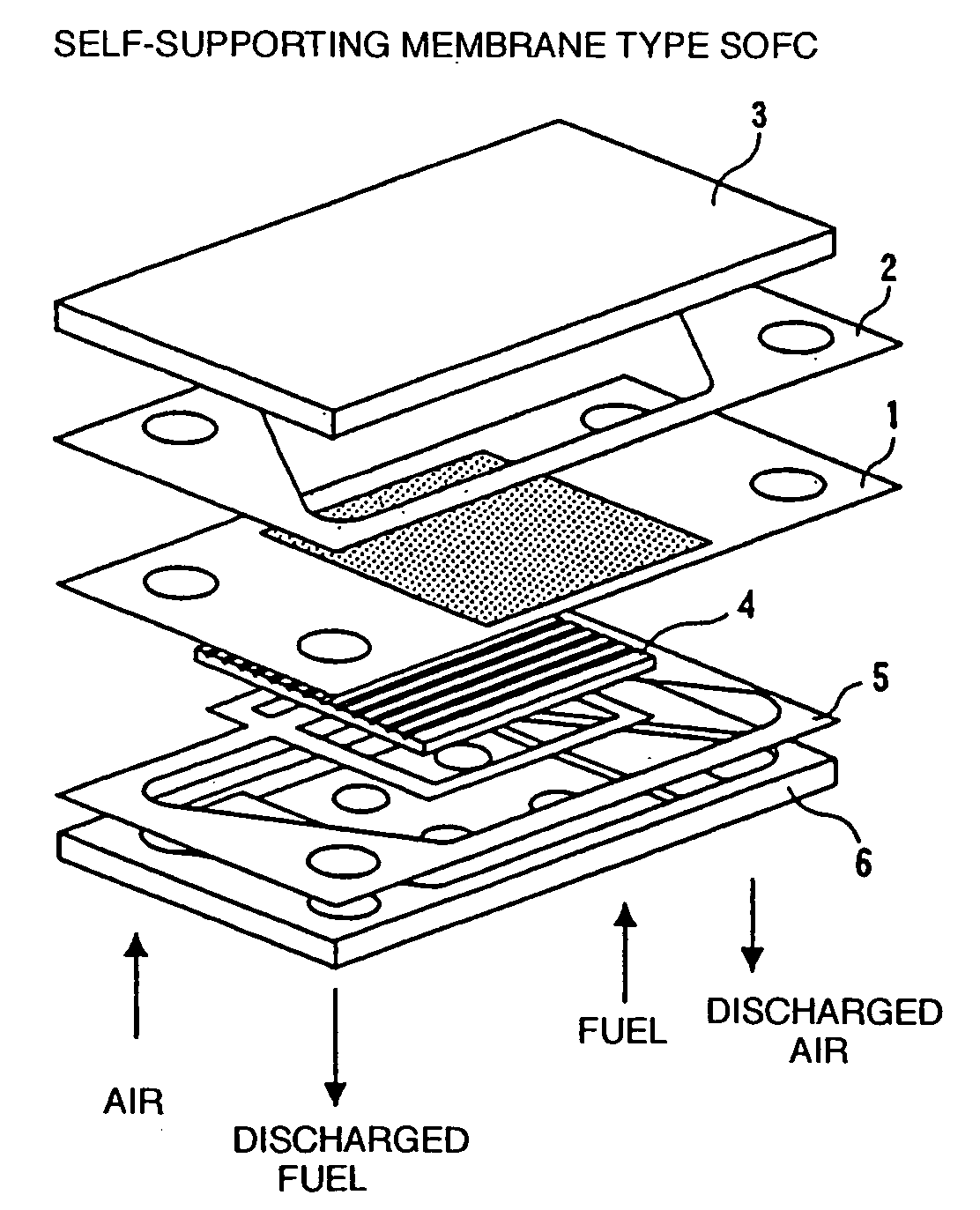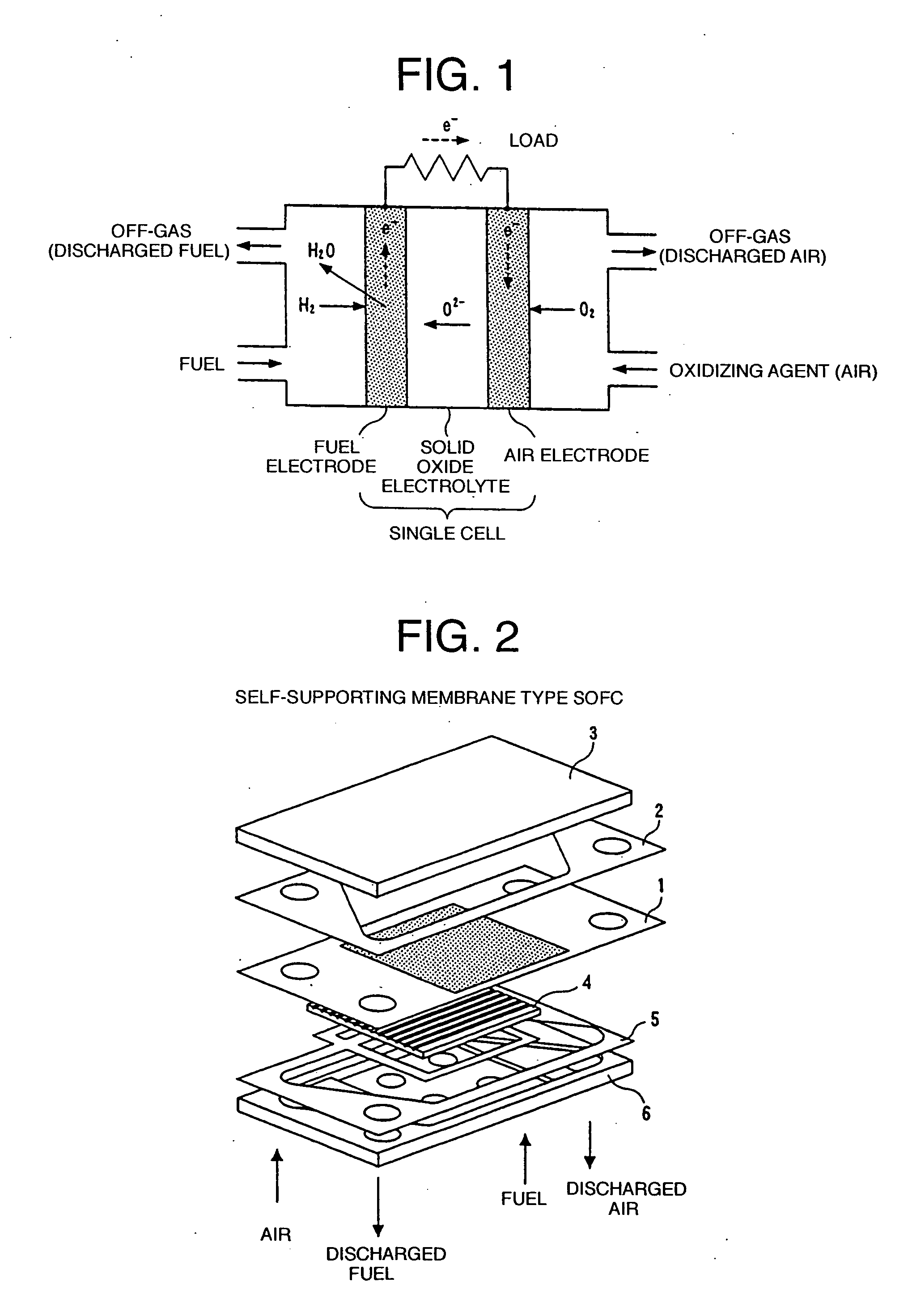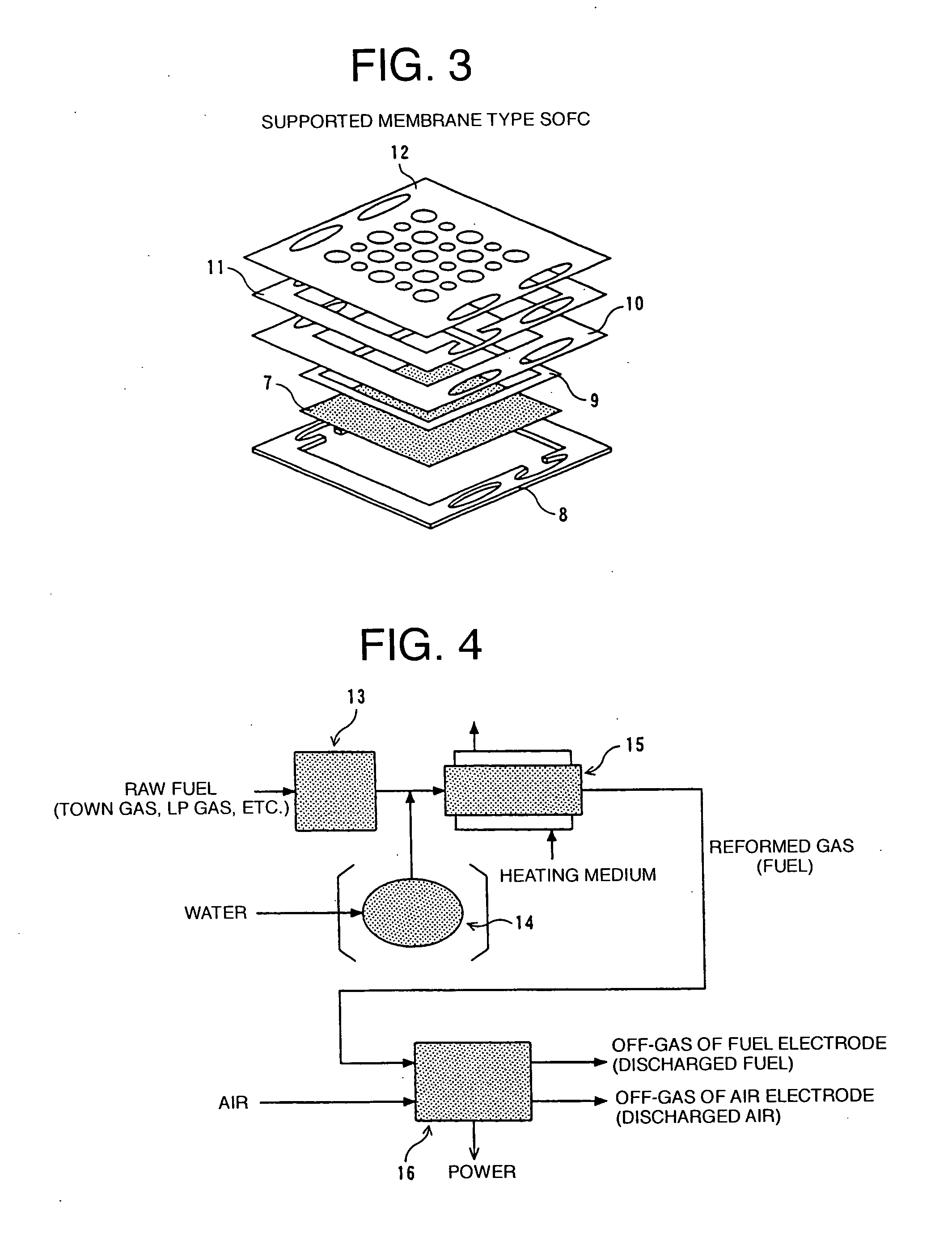Solid oxide fuel cell system
a fuel cell and solid oxide technology, applied in the direction of electrochemical generators, sustainable manufacturing/processing, lighting and heating apparatus, etc., can solve the problems of increasing the size deteriorating cell performance, and limited components of the sofc system
- Summary
- Abstract
- Description
- Claims
- Application Information
AI Technical Summary
Benefits of technology
Problems solved by technology
Method used
Image
Examples
embodiment 1
[0109]FIG. 23 is a longitudinal sectional view showing a configuration of a preliminary reformer by way of example. The present preliminary reformer corresponds to the preliminary reformer in the case where water is heated in the preliminary reformer to be thereby turned into the steam in the modes shown in FIGS. 5 to 7, respectively. In FIG. 23, the arrows indicate respective flow directions of fluids.
[0110] As shown in FIG. 23, cylinders 44, 45, 46, 47, 48, sequentially increasing in diameter, were disposed in multiple layers with spacing in-between. A heat exchanger (water heater) was built inside the innermost cylinder 44 in which a tubular heat exchange tube 49 disposed so as to form a coil. A reformation catalyst layer 50 was made up between the cylinder 44 surrounding the heat exchanger and the cylinder 45, and the reformation catalyst layer 50 was filled up with reformation catalysts for preliminary reformation. Reference numeral 51 denotes a water inlet conduit, and water ...
embodiment 2
[0112]FIGS. 24, 25 are schematic representations illustrating a configuration of an integrated heat exchanger for catalytic combustion, respectively, by way of example, and FIG. 24 is a longitudinal sectional view thereof while FIG. 25 is a sectional view taken on line A-A in FIG. 24. In FIG. 24, the arrows indicate respective flow directions of fluids.
[0113] As shown in FIG. 24, a first heat exchanger 59 was disposed at the center in the lower part of the integrated heat exchanger for catalytic combustion, and a second heat exchanger 60 at the center in the upper part thereof. Both the heat exchangers were plate-fin type heat exchangers built by alternately stacking tube plates and corrugate fins on top of each other. In both the heat exchangers, air to be fed to an SOFC stack was heated through indirect heat exchange. A mixture part (mixing chamber) 61 was disposed at a side part of the second heat exchanger 60, and a catalytic combustion layer 63 was disposed so as to be continu...
embodiment 3
[0121] A prototype of the supported membrane type SOFC, the preliminary reformer according to Embodiment 1 (FIG. 23), and the integrated heat exchanger for catalytic combustion according to Embodiment 2 (FIGS. 24, 25) were combined together and housed in the adiabatic vessel 30, thereby building an SOFC system for testing. For the adiabatic vessel, use was made of an adiabatic vessel with glass wool serving as a thermal insulating material 29, disposed around the adiabatic vessel. As shown in FIG. 21, the prototype of the SOFC stack 36, the integrated heat exchanger 32 for catalytic combustion, and the preliminary reformer 31 were assembled inside the adiabatic vessel 30 in sequence from the upper part to the lower part thereof.
[0122] For the raw fuel, use was made of a desulfurized town gas (for this reason, the desulfurizer 38 was not disposed). The fuel obtained by bringing in the raw fuel from the inlet pipe 57 via the raw fuel blower 37 and reforming the same in the preliminar...
PUM
| Property | Measurement | Unit |
|---|---|---|
| thickness | aaaaa | aaaaa |
| temperature | aaaaa | aaaaa |
| temperature | aaaaa | aaaaa |
Abstract
Description
Claims
Application Information
 Login to View More
Login to View More - R&D
- Intellectual Property
- Life Sciences
- Materials
- Tech Scout
- Unparalleled Data Quality
- Higher Quality Content
- 60% Fewer Hallucinations
Browse by: Latest US Patents, China's latest patents, Technical Efficacy Thesaurus, Application Domain, Technology Topic, Popular Technical Reports.
© 2025 PatSnap. All rights reserved.Legal|Privacy policy|Modern Slavery Act Transparency Statement|Sitemap|About US| Contact US: help@patsnap.com



